
IEEE NETWORK
Scope & Guideline
Pioneering Insights in Networking and Communications
Introduction
Aims and Scopes
- Networking Technologies and Protocols:
The journal emphasizes the development and optimization of networking technologies and protocols, particularly in the context of 5G and 6G networks, exploring how these technologies can enhance connectivity and data transfer. - Integration of Artificial Intelligence:
A significant focus is placed on the application of AI and machine learning in networking, including resource management, optimization, and security, highlighting the transformative impact of AI on traditional networking paradigms. - Edge Computing and IoT:
Research on edge computing and the Internet of Things (IoT) is prevalent, addressing how these technologies can be leveraged to improve network efficiency, reduce latency, and support real-time data processing. - Blockchain and Security:
The journal explores the role of blockchain in enhancing network security, data integrity, and decentralized communication frameworks, providing insights into privacy-preserving technologies and secure data sharing. - Next-Generation Network Architectures:
There is a consistent focus on next-generation network architectures, including non-terrestrial networks (NTN), digital twins, and service-oriented architectures, aiming to address the complexities of future communication environments.
Trending and Emerging
- 6G and Beyond:
A significant trend is the exploration of 6G technologies, with numerous studies addressing the architectural, technological, and application challenges associated with next-generation networks. - AI and Machine Learning Applications:
There is a growing emphasis on the application of AI and machine learning across various networking domains, including resource allocation, security, and performance optimization, showcasing their transformative potential. - Blockchain for Secure Networking:
Research focusing on blockchain's application in enhancing security, privacy, and trust in networking systems is on the rise, reflecting increasing concerns about data integrity and security. - Edge Computing Integration:
The integration of edge computing with network architectures is trending, as researchers explore its potential to reduce latency and improve real-time processing capabilities for IoT and other applications. - Digital Twins and Smart Networks:
The concept of digital twins in network management and operation is gaining traction, with studies investigating their use in monitoring, optimization, and predictive maintenance of network systems.
Declining or Waning
- Traditional Networking Models:
There has been a noticeable decrease in publications focusing on conventional networking models that do not incorporate modern advancements such as AI or blockchain, indicating a shift towards more innovative and integrated approaches. - Basic Network Security Protocols:
Research on basic security protocols without advanced techniques like AI-enhanced security solutions has become less common, as the community increasingly prioritizes more sophisticated and adaptive security frameworks. - Legacy Communication Technologies:
Themes centered around legacy communication technologies are waning, as the focus shifts to cutting-edge technologies like 6G and IoT, which are more pertinent to current and future networking challenges. - Static Network Management Techniques:
Static approaches to network management are becoming less relevant, with an increased emphasis on dynamic and AI-driven management solutions that respond to real-time conditions in network environments. - Individual Technology Focus:
Research that focuses narrowly on individual technologies without considering their integration into broader systems has seen a decline, as interdisciplinary approaches are increasingly favored.
Similar Journals
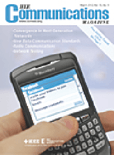
IEEE COMMUNICATIONS MAGAZINE
Connecting Ideas, Engineering the FutureIEEE Communications Magazine, published by the Institute of Electrical and Electronics Engineers (IEEE), is a leading journal in the fields of Computer Networks and Communications, Computer Science Applications, and Electrical and Electronic Engineering. With an impressive impact factor reflected in its Q1 quartile rankings across multiple categories, this periodical stands at the forefront of technological advancement and innovation. Since its inception in 1979, the magazine has been committed to disseminating high-quality research and insightful reviews that address current issues in communications technology. Targeting an audience that includes researchers, industry professionals, and students, IEEE Communications Magazine strives to foster a deeper understanding of emerging trends and challenges in the communications sector. Its affiliation with IEEE, a global leader in advancing technology, underlines the journal's credibility and significance in supporting scholarly communication in electrical and electronic engineering. The magazine operates without open access options, necessitating subscription or institutional access for its comprehensive content.

COMPUTER COMMUNICATIONS
Leading the Charge in Technological AdvancementsCOMPUTER COMMUNICATIONS is a premier journal published by Elsevier, covering cutting-edge research in the field of computer networks and communications. With an impressive 2023 Scopus ranking placing it in the 95th percentile and classified as Q1 in its category, this journal embodies the forefront of technological advancement and scholarly excellence. Since its inception in 1978 and poised to continue until 2024, COMPUTER COMMUNICATIONS serves as an essential platform for disseminating high-impact research that advances our understanding of computer networking protocols, architectures, and applications. Although it is not an open-access publication, the journal provides various access options to ensure that its findings are widely circulated among researchers, professionals, and students. Through rigorous peer review and a commitment to fostering innovation, COMPUTER COMMUNICATIONS plays a vital role in shaping the future of communication technologies.
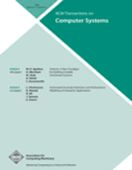
ACM TRANSACTIONS ON COMPUTER SYSTEMS
Elevating Knowledge in the Evolving Landscape of Computer SystemsACM Transactions on Computer Systems (ISSN: 0734-2071, E-ISSN: 1557-7333), published by the Association for Computing Machinery, stands as a leading journal in the field of computer science, particularly known for its focus on the design and performance of computer systems. Since its inception in 1983, the journal has fostered significant advancements in areas such as operating systems, networking, and distributed systems, making invaluable contributions to both academia and industry. Consistently ranked in the second quartile (Q2) of computer science journals, it holds a commendable position at #81 out of 232 in the Scopus rankings, reflecting its robust impact and relevance, with a percentile of 65th among general computer science publications. Although the journal does not currently offer open access options, its high-quality peer-reviewed content remains essential reading for researchers and professionals keen on deepening their understanding of computer systems and their evolution until 2024 and beyond. Engaging with this journal not only keeps one informed of the latest trends but also serves as an excellent platform for scholarly communication and collaboration.
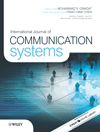
INTERNATIONAL JOURNAL OF COMMUNICATION SYSTEMS
Innovating Connections in Network EngineeringInternational Journal of Communication Systems, published by Wiley, is a premier scholarly publication dedicated to advancing the field of communication systems and network engineering. With an ISSN of 1074-5351 and E-ISSN 1099-1131, this journal has emerged as a critical resource for researchers and professionals alike, showcasing innovative research from 1994 to 2024. Holding a distinguished Q2 quartile ranking in both Computer Networks and Communications and Electrical and Electronic Engineering, it ranks within the top tiers of its field, reflecting its high impact and relevance. The journal's focus spans a wide range of topics within these disciplines, including but not limited to, advanced communication protocols, network design, signal processing, and emerging technologies. Although it does not currently offer open access options, the journal remains committed to disseminating high-quality research to contribute meaningfully to the scientific community. Researchers, professionals, and students will find invaluable insights and ideas to further their work and understanding in this dynamic field.
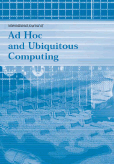
International Journal of Ad Hoc and Ubiquitous Computing
Connecting Ideas in Ad Hoc and Ubiquitous ComputingThe International Journal of Ad Hoc and Ubiquitous Computing, published by InderScience Enterprises Ltd, is a premier platform dedicated to advancing the fields of computer networks, communication systems, hardware, and software architecture. Since its inception in 2005, this journal has served as a critical resource for researchers, professionals, and students aiming to explore the intricate dynamics of ubiquitous computing and ad hoc networks. Though currently not an open-access journal, its scholarly contributions are well-recognized, as evidenced by its rank in the Scopus database, which places it within the lower quartiles of its respective categories. With an increasing focus on innovative solutions in computer science, the journal aims to facilitate knowledge dissemination and encourage interdisciplinary collaborations. Researchers are particularly drawn to the journal for its comprehensive coverage of emerging technologies, making it an invaluable asset in a world increasingly reliant on sophisticated communication infrastructures. As it continues to thrive towards 2024, the journal remains committed to fostering a vibrant academic community.
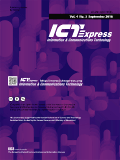
ICT Express
Shaping the Future of Computing and CommunicationICT Express is a leading open-access journal published by Elsevier that has established itself at the forefront of the fields of Artificial Intelligence, Computer Networks and Communications, Hardware and Architecture, Information Systems, and Software. Since its inception in 2015, this South Korea-based journal has provided a vital platform for disseminating innovative research and practical applications across these rapidly evolving domains. With an impressive impact factor and consistently high Scopus rankings—placing it in the top quartiles of its categories—it attracts contributions from both seasoned experts and emerging scholars. Current access options ensure that groundbreaking findings are readily available to a global audience, thus fostering collaboration and advancement in technology and computational sciences. As ICT continues to reshape various industries, the significance of research published in ICT Express is crucial for staying ahead in the digital landscape.

Telecom is an esteemed peer-reviewed journal published by MDPI, specializing in the fields of computer networks and communications as well as electrical and electronic engineering. Since its inception in 2020, this Open Access journal has provided a platform for innovative research and advancements in telecommunication technologies, making significant contributions to both academia and industry. With an impressive impact factor and a category rank of Q2 in the 2023 Scopus rankings, Telecom continues to be a valuable resource for researchers, professionals, and students seeking to engage with cutting-edge developments in telecommunication. The journal invites high-quality manuscripts that explore emerging trends, challenges, and solutions in the ever-evolving telecom landscape. Situated in Basel, Switzerland, Telecom is committed to fostering a global exchange of knowledge and serves as an essential conduit for advancing the discourse in telecommunications.
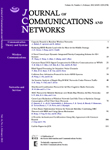
JOURNAL OF COMMUNICATIONS AND NETWORKS
Exploring Breakthroughs in Network Architecture and Data ManagementJOURNAL OF COMMUNICATIONS AND NETWORKS, published by the Korean Institute of Communications Sciences (KICS), is a leading academic journal that has been at the forefront of the fields of Computer Networks and Communications as well as Information Systems since its inception in 1999. With a strong commitment to advancing research in these critical areas, this journal has achieved a prestigious Q1 ranking in both domains as of 2023, reflecting its significant impact and innovative contributions to the field. The journal features original research, review articles, and technical notes that address the latest advancements in communication technologies, network architecture, and data management strategies. As a vital resource for researchers, practitioners, and students, it not only disseminates valuable findings but also fosters collaboration and knowledge exchange among diverse disciplines within the communications landscape. With a consistent annual volume, the journal continues to shape the future of communications science and offers authors an esteemed platform to showcase their work.

Digital Communications and Networks
Transforming ideas into impactful digital solutions.Digital Communications and Networks, published by KEAI PUBLISHING LTD, stands at the forefront of research in the rapidly evolving fields of communication, computer networks, and hardware architecture. Since its inception in 2015, this open access journal has been committed to disseminating high-quality, peer-reviewed articles that contribute to technological advancements and academic discourse in these critical domains. With an impressive Impact Factor and achieving Q1 Quartile rankings in its relevant categories for 2023, it has established itself as a vital resource for researchers, professionals, and students aiming to stay ahead in a competitive landscape. The journal's robust standing is reflected in its notable Scopus rankings, underscoring its influence in Computer Science and related fields. As we look toward the future, the journal continues to invite innovative research that shapes the digital communication landscape until 2024 and beyond.
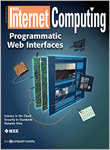
IEEE INTERNET COMPUTING
Connecting Research with Real-World ApplicationsIEEE Internet Computing is a prominent journal in the field of computer networks and communications, published by the esteemed IEEE Computer Society. With an impressive impact factor and ranking in the Q1 category for 2023, it stands out as a vital resource for researchers, professionals, and students alike, seeking to delve into the latest advancements and trends in internet computing. Since its inception in 1997, the journal has provided a platform for pioneering studies and insightful discussions that bridge theory and practice in the rapidly evolving digital landscape. The journal is indexed with an excellent Scopus rank of #77 out of 395, placing it in the 80th percentile of its category, which underlines its relevance and influence in the academic community. While it currently does not offer Open Access options, its rich archive of scholarly articles remains accessible to those affiliated with research institutions and libraries. Furthermore, the journal's comprehensive coverage continues through 2024, ensuring it remains at the forefront of the discipline.